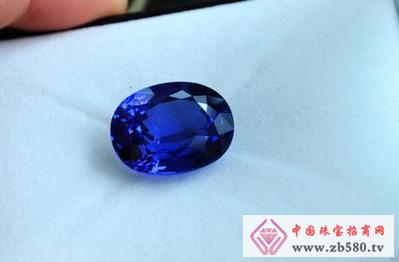Fifteen years ago, the popularity of the Titanic, the general audience was deeply attracted by the blue and crystal of the "heart of the ocean" worn by the heroine. However, this tanzanite from the foot of Mount Kilimanjaro in Tanzania, East Africa, has caused many people to think it is a sapphire. It is precisely because the blue of tanzanite and the blue of sapphire are very similar, many consumers are easily confused. So how do we identify the two? The easiest way is to distinguish between hardness and color. The sapphire has a Mohs hardness of 9 and the tanzanite is 6.5-7. Compared to sapphire, tanzanite is more colorful. Most sapphires are grayish or blackish, while tanzanite is more blue. Compared with sapphire, tanzanite is much cheaper and more "big". The 1-2 carat sapphire is relatively large, and the tanzanite has more than a dozen carats. At the same time, most of the tanzanite is relatively clean and clear, and the impurities of sapphire are relatively more. In addition, how should we evaluate the quality of tanzanite? It is generally accepted internationally that the Tanzanite Fund is rated according to the “5C†standard, that is, the higher the combined value of color, clarity, cut, carat weight, confidence, etc., the rarer the tanzanite, the higher the value. . Since 90% of the world's tanzanite is distributed through members of the International Colored Gemstone Association (ICA), you should choose Tanzanite, which is darker in color and has the MarkofRarityTM logo (the logo of the Tanzanite Foundation). . It is worth mentioning that the synthetic tollite made in Russia on the market is posing as tanzanite, and it is difficult to distinguish. Adding iron, vanadium, cobalt and other elements to the forsterite will make the original olive green appear blue-violet and become the "replacement" of tanzanite. Therefore, if consumers intend to purchase a considerable price of tanzanite, they must let the seller show the authority certificate of gemstone inspection or go to the authority for inspection on the spot, otherwise they must purchase carefully. Minor Mistakes: Must buy 100% natural tanzanite In fact, 95% of the blue tanzanite currently on the market is heat treated. The heat treatment converts the tan of the tanzanite into a uniform blue color, and the color is more stable, so most of the tanzanite is heated to remove brown, yellow or green colors. Stand Collar Blazer,Lady Blazer,Knit Black Blazer,Combined Knitting Blazer SHAOXING YINBO IMP&EXP CO.,LTD , https://www.yinbotex.com
December 19, 2020